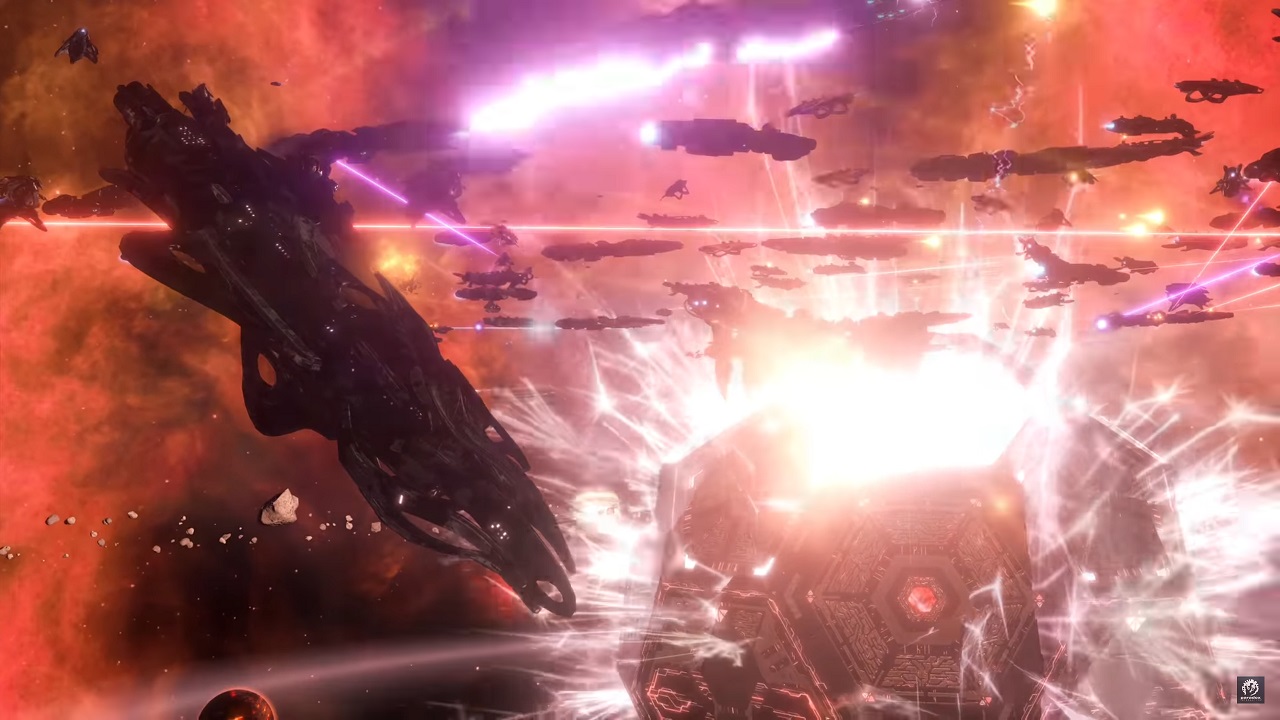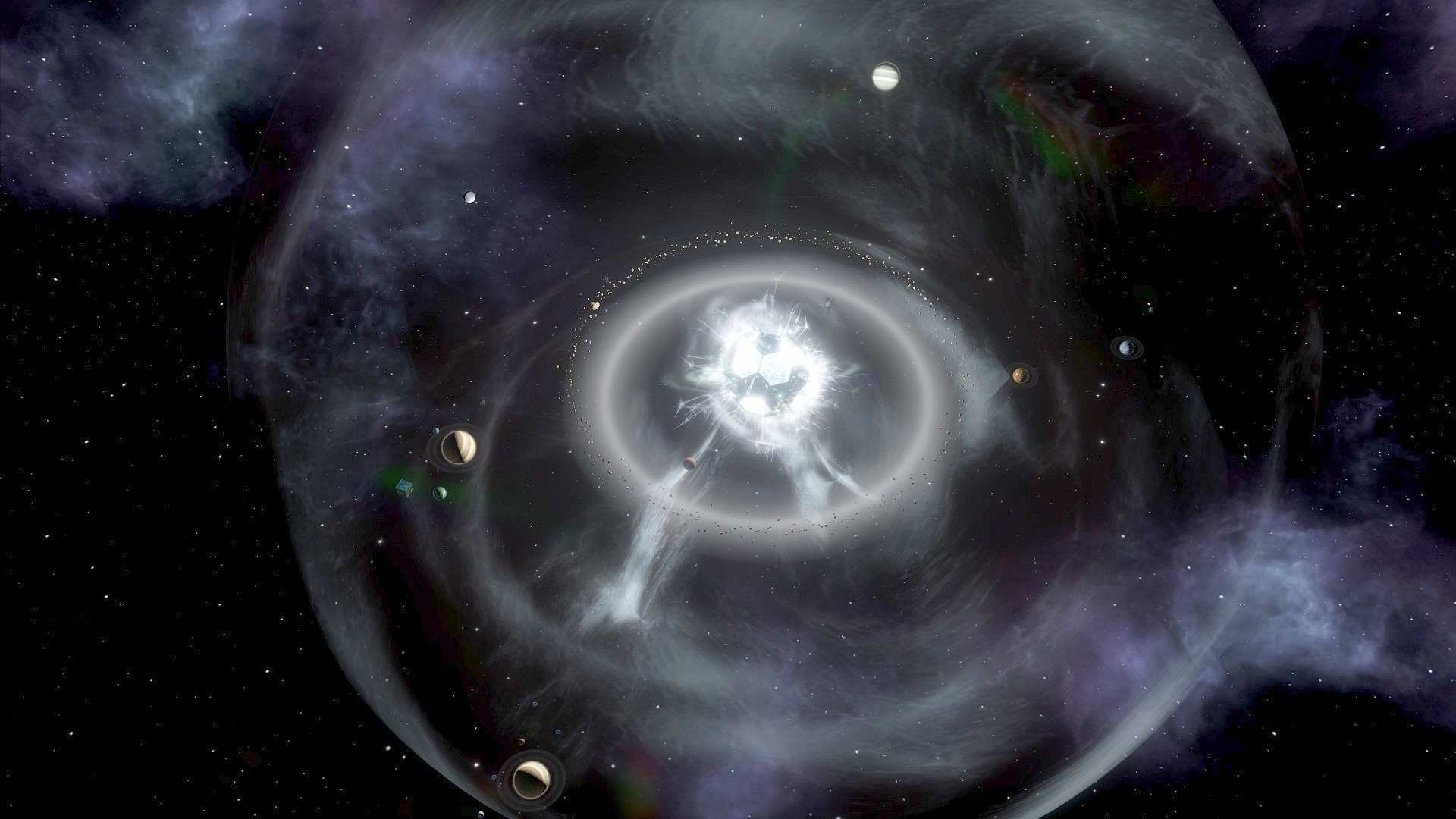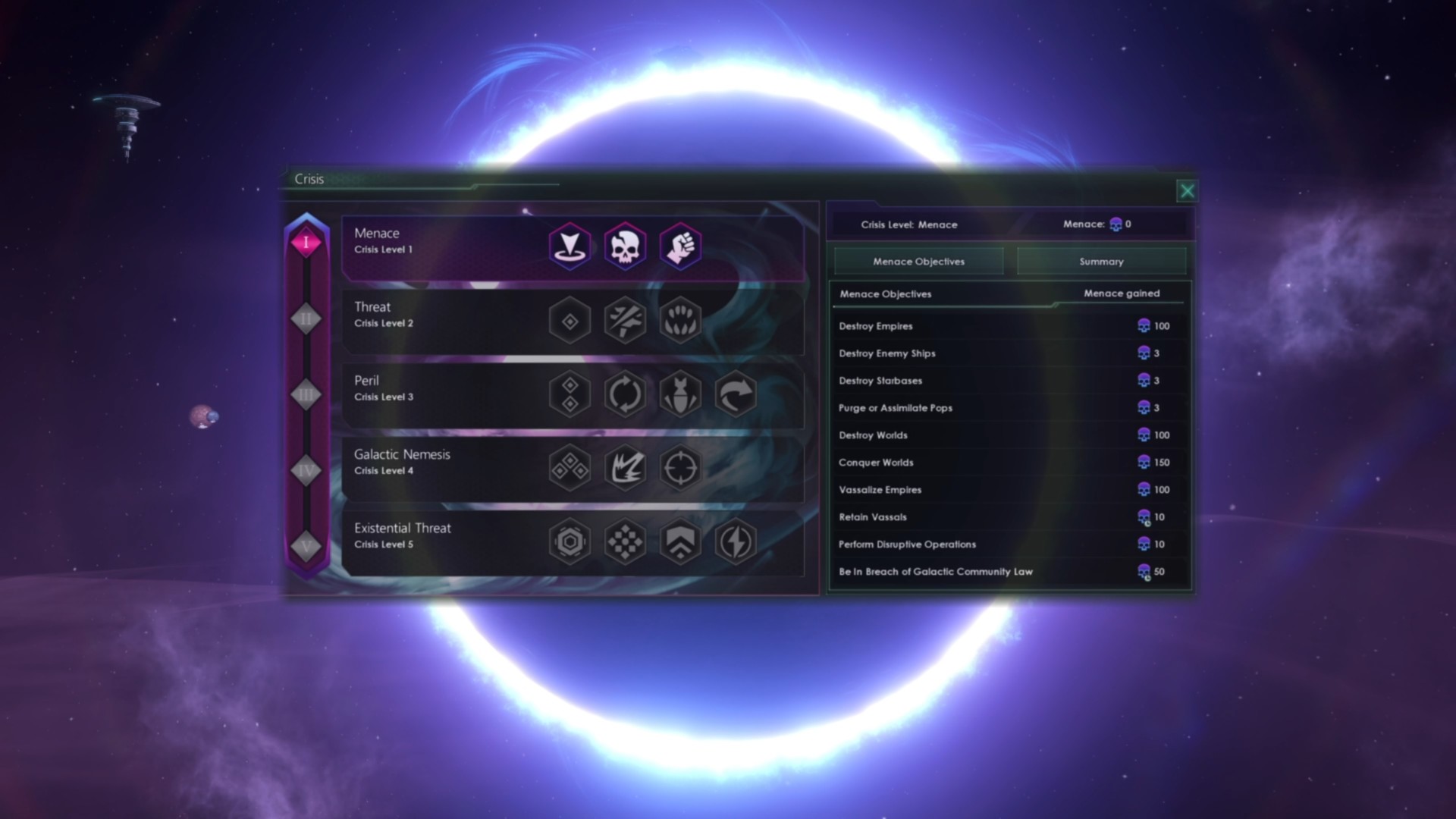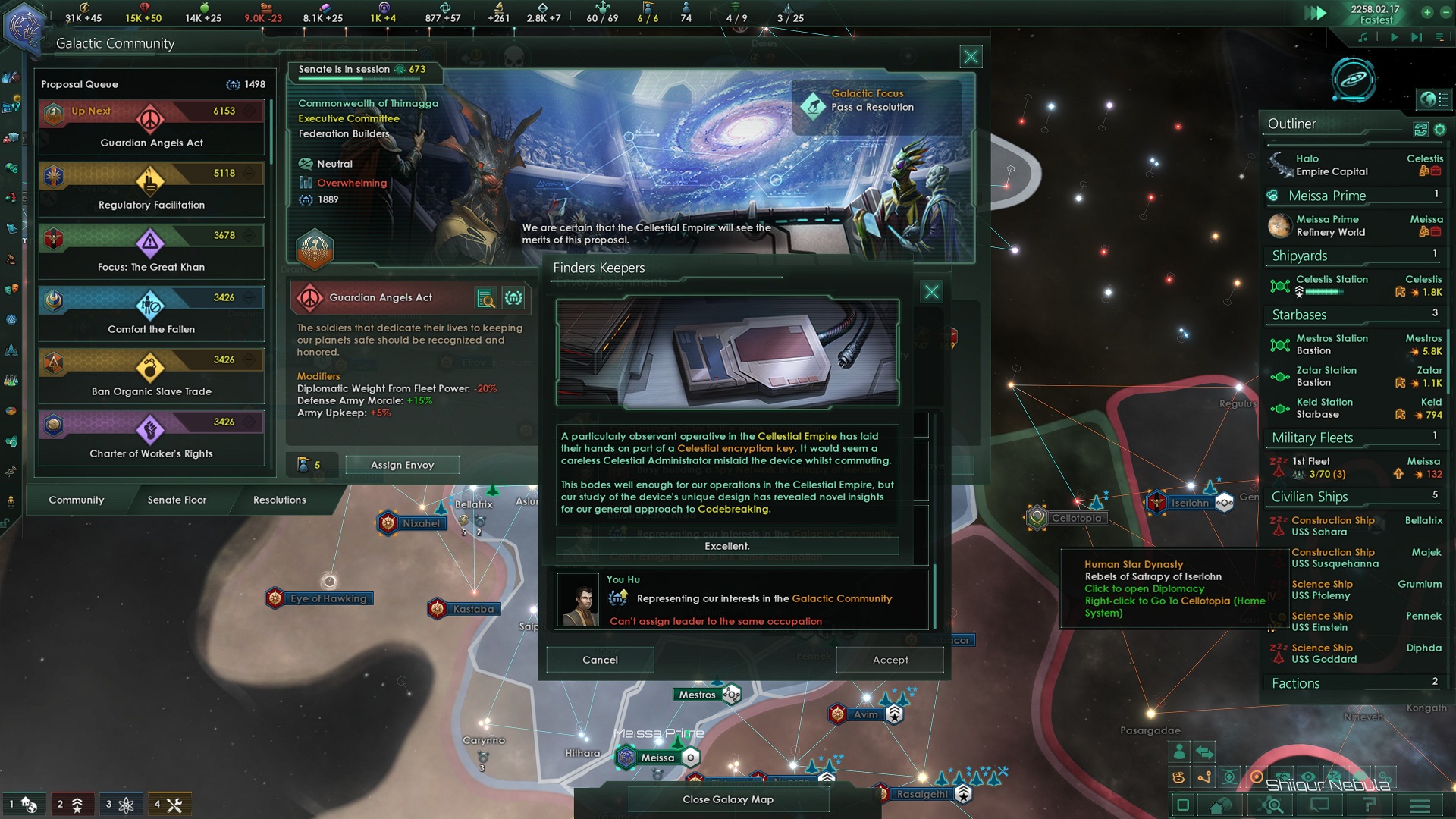
Stellaris: Nemesis
Paradox Interactive
I’ve playeda ton of space civilization-building games, everything from the famous Master of Orion 2, to Distant Worlds. However, nothing has come close to Stellaris. Like most grand strategy games developed by Paradox Interactive, Stellaris didn’t have too much content when it first launched in 2016. But the five-year span that it debuted, they’ve added a plethora of DLCs and free content that has made it one of the greatest (and my personal favorite) strategy games on the market.
Paradox’s latest DLC is probably the most content-rich, with its most widely touted features—the ability to either become the endgame Crisis or the Custodial saviors. During the later portion of a game, there is an Ascension Perk to “Become the Crisis.” This move will unlock a completely new UI area including the Crisis path.

There’s a new currency call Menace that you can accumulate through performing various dastardly deeds, such as killing off colonies, destroying entire civilizations, and much more. Once your stellar civilization learns enough special science projects and garners enough Menace, you will gain access to new Crisis Levels and more powerful abilities. This orgy of dark power leads up the construction of an Aetherophasic Engine Megastructure, an ultra-powered weapon that can obliterate entire star systems.
Meanwhile, the civilizations that stand up to oppose the Crisis Empires also have new tools to utilize in the form of the Galactic Custodians. After the Galactic Community forms, civilizations in them can vote to nominate one of its members as the Custodian Empire. These empires are bestowed with special emergency powers that are intended to combat any Crisis that has formed.

It should be noted that these unusually powerful Custodian Empires are given a specific term limit, in other words, the clock is ticking as soon as they are nominated. However, there’s a new resolution that can be passed to abolish term limits. In fact, Custodians can even propose to replace a Galactic Community with the Galactic Imperium, with a single Emperor as its leader.
This makes for some incredibly emergent storytelling moments. For instance, a truly good-meaning Custodian can end up defeating the Crisis, and then laying down their augmented power. But on the other side of the coin, a more sinister one could hide its true intentions until the end game period and cling on to power. Of course, many other civilizations may not be exactly happy with that and a rebellion could form to oppose this power-hungry Imperium, and thus plunge the galaxy headlong into a massive civil war.

Nemesis also introduces brand new mechanics for gathering Intelligence, as well as Espionage, in the free 3.0 Dick Update. Instead of knowing all about other alien civilizations that you come across, you need to learn about them now. You can do this in several different ways such as deploying benign envoys to these factions to build trust with them or getting them to go dark and gather your intelligence through espionage.
The Espionage system isn’t as overpowered as I’ve seen it in other strategy games. For instance, you can’t assassinate the leaders of other factions, nor its admirals or scientists. But you can perform covert actions such as stealing technologies, funding mercenaries to attack them and sabotaging key starbases. Of course, you also have to be very careful, as your operatives can become both detected and disposed of.

Stellaris: Nemesis may not be everyone’s cup of tea, but for those who relish intrigue and subterfuge (such as myself), and have been waiting on an espionage system during the game’s five-year lifespan—this DLC is practically a Godsend. It’s definitely a real game-changer and provides near-limitless replayability.
RATING: 9.2/10
Stellaris has some great graphics so you’ll need a pretty beefy gaming PC or gaming laptop in order to play it at a decent framerate. Therefore, you may just want to invest in a superior gaming rig:

Visit CyberpowerPC’s website to check out all of the other great deals as well!